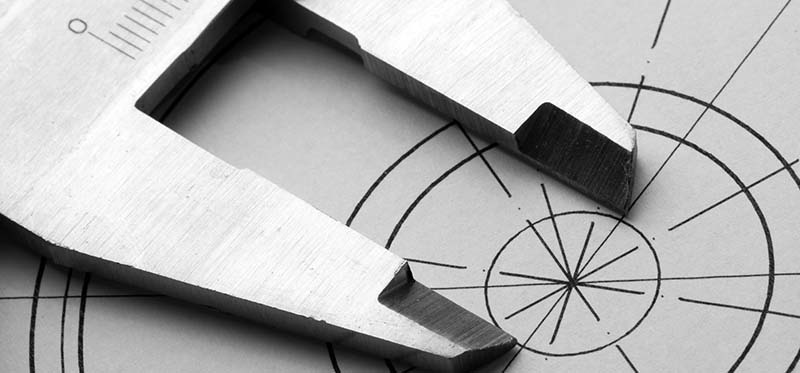Tolerance refers to the allowable range of deviation for geometric parameters (dimensions, geometric errors, and surface roughness, etc.) of a part during the manufacturing process. It reflects the manufacturing precision of the factory, where smaller tolerance values indicate higher precision and greater manufacturing complexity.
Tolerance plays a crucial role in the manufacturing industry. Appropriate tolerances can enhance product performance and reliability, reduce failure rates, and ensure proper fitting and functionality of parts. Larger tolerance ranges imply lower manufacturing precision requirements, thereby reducing manufacturing difficulty and costs. Choosing suitable tolerance ranges, while ensuring product quality and performance, contributes to lowering manufacturing costs.
There are various types of tolerance for the geometric parameters of a part, including dimension tolerance, form tolerance, and position tolerance.
Types Of Tolerance
1. Dimension Tolerance:
It refers to the allowable variation in dimensions and is equal to the algebraic difference between the maximum and minimum limits of a dimension.
2. Form Tolerance:
It represents the total allowable variation in the shape of a single actual feature, including straightness, flatness, roundness, cylindricity, and profile of a line and profile of a surface (6 items in total).
3. Position Tolerance:
It refers to the total allowable variation in the positional relationship of associated actual features to a datum. It restricts the mutual positional relationships between two or more points, lines, or surfaces on a part, including parallelism, perpendicularity, inclination, coaxiality, symmetry, position, circular runout, and total runout (8 items in total). Tolerance specifies the manufacturing precision requirements for a part and reflects the level of difficulty in its production.

Geometric tolerance
Shape tolerance and position tolerance are collectively referred to as geometric tolerance, and these types of errors can impact the functionality of mechanical products. When designing, the selection of geometric tolerance should follow the following principles:
Functionality and Performance:
The chosen geometric tolerance should ensure that the mechanical product functions as intended and meets its performance requirements. It should not compromise the product’s performance or safety.
Cost-effectiveness:
While tighter geometric tolerances may improve precision, they can also increase manufacturing costs significantly. It is essential to strike a balance between the required precision and the associated manufacturing expenses.
Assembly and Fit:
Geometric tolerances play a crucial role in ensuring proper assembly and fit of mechanical components. The tolerances should allow for easy assembly and proper functioning of the product.
Materials and Manufacturing Processes:
The materials used and the manufacturing processes employed influence the achievable geometric tolerance. It is necessary to consider the capabilities of the chosen materials and processes when determining geometric tolerances.
Application and Environment:
The operating environment and application of the mechanical product can affect the choice of geometric tolerance. Harsh conditions may require tighter tolerances to maintain functionality and longevity.
Industry Standards and Regulations:
Compliance with industry standards and regulations is essential. Designers should ensure that the chosen geometric tolerance aligns with relevant standards and meets regulatory requirements.
Interchangeability and Compatibility:
In cases where multiple components need to be interchangeable or compatible, geometric tolerances should be carefully selected to ensure proper fit and functionality.
Performance over Time:
Geometric tolerances should consider potential changes in performance over time, such as wear and tear or material degradation.
Communication and Collaboration:
Effective communication between designers, manufacturers, and other stakeholders is crucial to ensure that the chosen geometric tolerance is achievable and meets the desired specifications.
In summary, the tolerance design for non-standard parts in engineering and manufacturing is a crucial process that directly impacts the functionality, quality, and cost-effectiveness of components. The main principles to consider involve prioritizing functional requirements, ensuring manufacturing feasibility, and striking a balance between precision and cost. Additionally, factors such as material properties, operational environment, and safety regulations should be carefully taken into account. By fostering effective communication and collaboration among design, manufacturing, and quality control teams, engineers can optimize the tolerance design to achieve high-quality, reliable, and compatible non-standard parts that meet the specific needs of diverse industries and applications. Ultimately, a well-executed tolerance design process contributes to the successful production of components that perform accurately and consistently, meeting the demands of modern engineering challenges.



